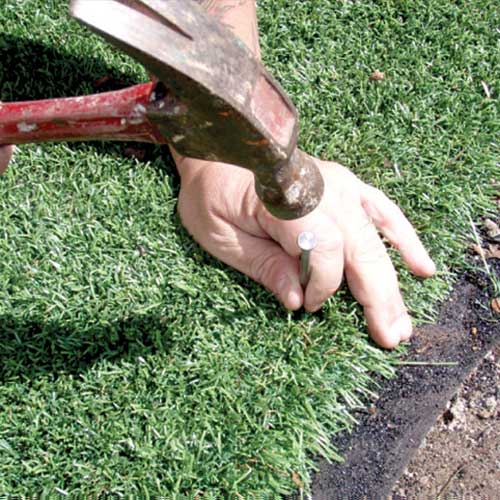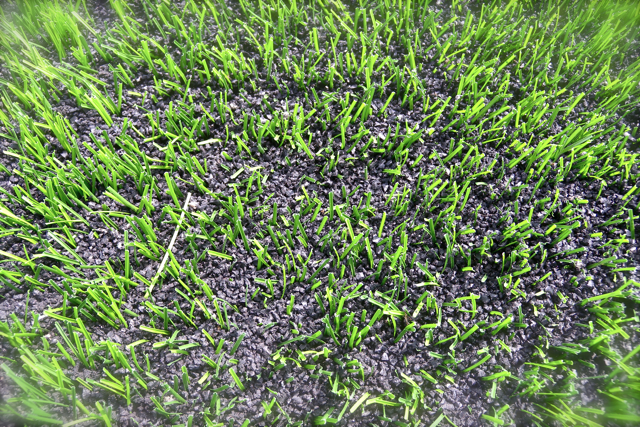Tailored Turf Installation Phoenix AZ for Homes, Companies, and Recreational Spaces
Tailored Turf Installation Phoenix AZ for Homes, Companies, and Recreational Spaces
Blog Article
Delve Into the Environmental Advantages of Opting for Synthetic Grass Solutions
The fostering of man-made turf remedies provides an engaging possibility to deal with pressing ecological difficulties. By considerably decreasing water use and reducing the application of dangerous chemicals, these options not just promote sustainable landscape design however also secure regional communities.
Water Conservation Perks
Among one of the most significant advantages of artificial turf is its capability to conserve water. Typical grass yards need significant irrigation, specifically in areas prone to drought or water restrictions. In contrast, synthetic grass does not need watering, substantially lowering the total need for water sources. This attribute is specifically useful in deserts where water deficiency is a pushing concern.
By eliminating the requirement for regular watering, synthetic grass contributes to lasting landscape techniques and helps minimize the environmental influence of excessive water usage. Moreover, the conservation of water reaches the reduction of overflow, which can cause soil disintegration and river pollution.
Furthermore, the installment of artificial grass permits towns and home owners to allot water sources more efficiently, concentrating on important uses such as drinking water and agriculture. The shift towards synthetic grass not just advertises accountable water use but also aligns with broader environmental objectives targeted at maintaining all-natural sources.
As communities increasingly prioritize sustainability, the water conservation benefits of synthetic grass present an engaging situation for its adoption in domestic and commercial landscaping jobs.
Minimized Chemical Use
The change to man-made lawn significantly reduces the reliance on chemical treatments frequently utilized in all-natural lawn maintenance. Traditional grass management usually involves the application of plant foods, herbicides, and pesticides to promote development and control insects. These chemicals can posture dangers to human health, regional wild animals, and the atmosphere, adding to soil and water contamination.
In comparison, fabricated lawn eliminates the need for these unsafe materials. By minimizing the release of synthetic compounds into the environment, man-made lawn advertises much healthier dirt and water systems.
Furthermore, the lack of chemical drainage associated with synthetic grass installments assists secure local waterways from air pollution, supporting water life and preserving biodiversity. Arizona turf. As communities increasingly focus on sustainable techniques, going with artificial turf offers a sensible remedy that straightens with ecological conservation goals. Via this change, homeowner can delight in lush eco-friendly spaces without compromising eco-friendly health, leading the means for an extra lasting future
Reduced Carbon Footprint

Additionally, the installation of synthetic grass can cause substantial water conservation. All-natural yards call for considerable quantities of water for watering, which not just includes in the carbon impact linked with water removal and therapy but additionally stress local water resources. On the other hand, synthetic grass needs minimal maintenance, needing no watering, consequently dramatically reducing water usage and its associated energy expenses.
Furthermore, the long life of synthetic grass contributes to its reduced carbon impact. With a life expectancy of as much as 15 years or more, the requirement for regular substitutes is reduced, causing much less waste and reduced power usage in manufacturing and taking care of traditional grass alternatives. Overall, artificial turf presents a lasting alternative for eco aware landscape design.
Environment Conservation
Environment preservation is site web a vital factor to consider in the dispute over landscape design options, especially when comparing synthetic grass to natural grass. All-natural grass lawns frequently need considerable maintenance, consisting of making use of fertilizers, chemicals, and herbicides, which can negatively impact neighborhood ecosystems. These chemicals can seep into the dirt and waterways, harming indigenous flora and animals and interrupting regional environments.
On the other hand, synthetic grass provides an opportunity to lower the eco-friendly impact of landscape design. By going with artificial turf, property owners can lessen the interruption of natural habitats related to traditional yard treatment methods. Synthetic grass gets you can try here rid of the requirement for hazardous chemicals, therefore securing close-by wild animals and preserving the stability of surrounding ecological communities. The installment of man-made grass can lead to the conversion of former yard areas into even more biodiverse landscapes, such as pollinator yards or indigenous plant locations, which can sustain neighborhood wild animals.
Ultimately, the shift to fabricated lawn not just preserves water and reduces upkeep initiatives yet additionally cultivates a more unified relationship between human tasks and the natural surroundings, advertising habitat preservation at the same time.
Long-Term Sustainability
Lasting sustainability is a critical factor in evaluating the advantages of synthetic turf over traditional lawn yards. Among one of the most substantial benefits of fabricated lawn is its durability; it can last approximately 15-20 years with very little upkeep, whereas natural this page grass calls for frequent reseeding and substitute. This durability lowers the requirement for consistent resources, such as water, plant foods, and pesticides, which are necessary for preserving a healthy yard lawn.
Additionally, artificial lawn adds to a reduction in carbon exhausts connected with lawn care tools. Typical yards typically call for gas-powered lawn mowers, trimmers, and blowers, all of which contribute to air pollution. Phoenix turf companies. In contrast, synthetic grass gets rid of the need for such tools, advertising a cleaner setting
Furthermore, the manufacturing of synthetic grass increasingly uses recycled products, boosting its sustainability account. As manufacturers adopt eco-friendly practices, the environmental footprint of synthetic lawn continues to decrease.

Conclusion
The adoption of synthetic grass services presents significant environmental benefits, consisting of significant water preservation, minimized dependence on unsafe chemicals, and a reduced carbon impact. Fabricated lawn aids in protecting natural habitats by lessening land disruption and advertising long-lasting sustainability with the usage of sturdy products. Jointly, these variables emphasize the possibility of man-made grass to add favorably to ecological wellness and offer a feasible choice to typical landscape design techniques in an increasingly resource-conscious globe.
In contrast, synthetic lawn does not need watering, significantly reducing the overall demand for water sources. By lessening the launch of synthetic substances into the ecosystem, synthetic grass advertises healthier dirt and water systems.
Additionally, the installation of artificial lawn can result in significant water conservation. In contrast, artificial lawn requires very little upkeep, calling for no watering, consequently considerably reducing water use and its linked energy prices.

Report this page